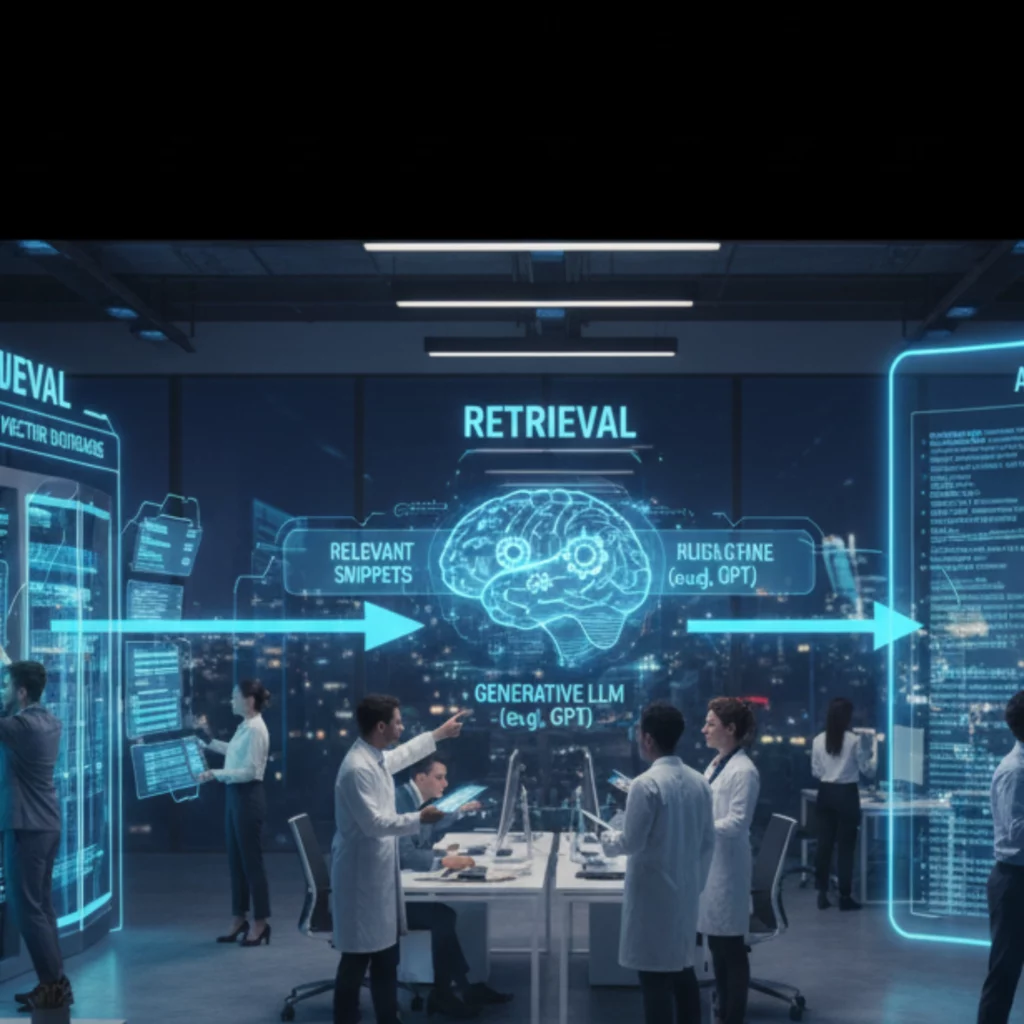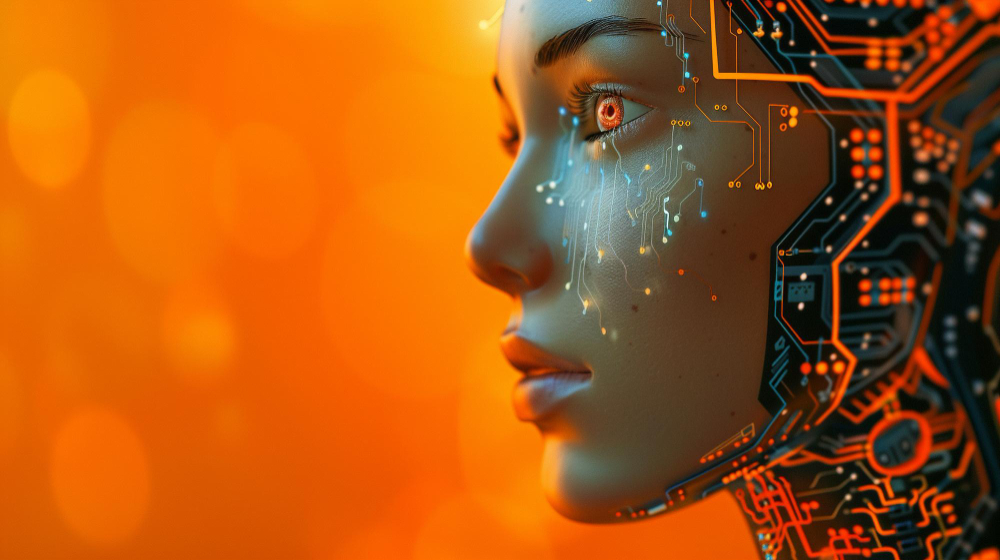Understanding AI in the workplace
Artificial Intelligence (AI) has emerged as a transformative force in the modern workplace. Playing a crucial role in revolutionising employee onboarding processes and HR solutions. One of the main ways AI is contributing to this transformation is through automation.
AI-powered chatbots and virtual assistants can guide new employees through the induction process. Answering their questions, providing relevant information and streamlining administrative tasks.
This not only reduces the burden on HR professionals. But it also ensures a consistent and personalised induction experience for each new recruit.
The impact of AI extends beyond the initial integration phase. It assists in talent acquisition by using algorithms to filter CVs and identify the most qualified candidates. This speeds up the recruitment process.
What's more, AI-driven tools can continuously improve employee engagement and satisfaction. Providing valuable insights to HR teams for proactive intervention and retention strategies.
Ready to take the plunge? Contact us and let one of our experts implement a personalised AI assistant in your company.
The need for optimised employee integration
Effective employee integration is crucial to organisational success. It sets the tone for an individual's journey within the company.
Traditional induction processes often involve paperwork, manual training sessions and administrative tasks that can be time-consuming and impersonal.
AI in HR is revolutionising this aspect by personalising the induction experience. Tailoring it to the specific needs and preferences of each new employee.
Through AI-driven systems, companies can provide interactive and dynamic integration modules that adapt according to employee progress and feedback. The result is a more engaging and effective learning process.
AI can also use data analytics to identify potential bottlenecks in the onboarding process. Enabling HR teams to proactively tackle issues and ensure a smoother transition for new recruits.
This not only improves the employee's perception of the organisation, but also contributes to higher retention rates and improved overall productivity. Making AI an invaluable tool in modern HR practices.
Data-driven HR: How AI improves efficiency and productivity
AI-driven analytics can also help identify potential skills gaps among employees. Enabling targeted training and development programmes.
What's more, AI can analyse vast quantities of data to help organisations identify patterns and trends in their integration processes. Enabling them to make data-driven improvements and optimisations over time.
In essence, integrating AI into HR and employee management processes not only improves efficiency but also contributes to overall productivity and workforce wellbeing. Making AI an indispensable tool for modern organisations seeking competitive advantage in the ever-changing business landscape.
The Integration Process: Traditional vs AI-Driven

The Traditional Integration Process
One of the key characteristics of traditional induction is its linear and structured nature. With pre-defined steps that all new employees must follow. While this approach can offer consistency in the onboarding experience, it can also be time-consuming and inflexible.
In addition, traditional onboarding may not always adapt well to the diverse needs and preferences of individual employees or to today's fast-paced, technology-driven work environments. This often leads to delays, inefficiencies and less than optimal integration of new recruits into the organisation's culture and workflow.
Traditional HR onboarding processes present a number of drawbacks and challenges. Impacting both the effectiveness of the onboarding process and the overall employee experience. Some of these drawbacks include:
- Time-consuming: Manual induction processes tend to be time-consuming for both HR staff and new recruits. Paperwork, administrative tasks and face-to-face meetings can slow down the process and delay an employee's ability to start contributing to the organisation.
- Inconsistencies: Human-led induction processes are prone to inconsistency and error. Different HR staff may provide varying levels of information or guidance, leading to an uneven induction experience for new recruits.
- Lack of personalisation: Without the help of technology and data-driven insights, traditional integration can struggle to deliver personalised experiences tailored to individual employee needs and roles.
- Data management problems: Traditional integration can lead to dispersed and inconsistent data management. This can hamper HR's ability to track integration progress, assess process effectiveness and ensure compliance.
- Reduced commitment: Lengthy and administratively burdensome induction processes can lead to a reduction in employee engagement and job satisfaction. This is because new recruits can feel disconnected from the organisation during the initial stages of employment.
- Compliance risks: Without automated tracking and reminders, manual induction processes can lead to compliance risks if essential training or documentation is missed or delayed.
- Less emphasis on Value-Added Activities: HR staff can spend a significant amount of time on administrative tasks. Leaving less time for strategic HR activities, talent development and employee engagement initiatives.
A more detailed video explaining traditional integration
The AI-driven Integration Process
AI in onboarding represents a contemporary paradigm shift in the way organisations welcome and onboard new employees. By harnessing machine learning algorithms, AI can automate time-consuming administrative tasks such as paperwork and data entry. This frees up HR professionals to focus on more strategic, human-centred aspects of induction.
What's more, AI-powered integration solutions can deliver personalised learning experiences tailored to each employee's skills, knowledge gaps and learning pace. Ensuring they receive relevant training and resources precisely when they need them.
This not only speeds up the integration process but also improves commitment and job satisfaction. Because employees feel valued and well prepared for their roles.
In the fast-moving, competitive commercial landscape, AI-driven onboarding is a game changer. Helping organisations remain agile and responsive while fostering a positive experience for their new recruits.
AI integration is not limited to HR purposes, learn more more about growing your business through the use of AI.
Case studies: Successful applications of AI in Integration
Here are a few successful case studies of organisations that have implemented AI in their integration process.
IBM Watson Talent: IBM Watson Talent has implemented AI-driven onboarding solutions to streamline and personalise the onboarding process. Using natural language processing and machine learning, IBM's platform can analyse CVs and match candidates to appropriate vacancies. It also provides new recruits with chatbots that answer common questions, offer training recommendations and help them acclimatise to the company culture.
Unilever integration chatbot: Unilever, a multinational consumer goods company, is using a chatbot called «U-First» to onboard new employees. The chatbot guides new recruits through the induction process, answering their questions and providing important information about the company, policies and procedures. U-First also collects feedback from new employees, helping Unilever to continually improve its induction process.
«Deloitte D-ICE: Deloitte has developed a Digital Integrated Onboarding (D-ICE) platform that leverages AI and analytics. D-ICE delivers personalised onboarding experiences to new employees by analysing their skills, preferences and roles. It recommends training modules and connects new recruits with mentors. It uses AI-driven analytics to track the success of onboarding efforts.
Discover how to build your own Chatbot.
The Role of AI and HR Integration in Employee Onboarding
Personalised Learning Experiences
AI-driven platforms excel in their ability to analyse in depth an employee's skills, past experiences and preferred learning styles. This enables them to offer tailored training programmes that meet individual needs and preferences.
This high level of personalisation not only makes the learning process more engaging and effective, but also speeds up the integration process. Allowing new recruits to acquire the necessary knowledge and skills more effectively.
As a result, new employees feel empowered and well supported. This contributes significantly to their job satisfaction.
When individuals experience a smooth, personalised induction process, they are more likely to feel valued and invested in their role from the outset. Ultimately leading to greater employee satisfaction and overall organisational success.
Employee Management and Streamlining Administrative Tasks
AI in employee management can automate tedious administrative tasks. From filling in forms to scheduling meetings, AI can take over these tasks. This frees up HR professionals to focus on more strategic tasks.
Recruitment and Talent Acquisition :
- CV analysis: AI-powered tools can analyse CVs and applications to select candidates based on predefined criteria.
- Chatbots for Initial Screening: Chatbots can interact with candidates, answering questions and assessing their qualifications before passing them on to human recruiters.
Performance Management :
- 360-degree feedback analysis: AI can analyse feedback from a variety of sources, including peers and managers, to provide a more comprehensive assessment of employee performance.
- Performance predictions: AI can predict future performance based on historical data, enabling managers to proactively tackle potential problems.
Employee engagement and well-being :
- Feelings analysis: AI can analyse employee feedback and feelings from surveys, emails or communication tools to assess engagement and overall well-being.
- Recommendation systems: AI can suggest personalised wellbeing programmes or resources to employees based on their individual needs and preferences.
Workforce Planning and Management :
- Optimising shift planning: AI algorithms can optimise employee schedules to meet demand while taking into account employee preferences and labour laws.
- Presence monitoring: AI can track attendance and clocking, identifying trends and potential problems.
Employee Assistance and Support :
- AI Chatbots for HR queries: Chatbots can manage employees' day-to-day HR questions, providing quick and consistent answers.
- Support for mental health: AI-driven apps and platforms can offer mental health resources and support to employees. Including chatbots for emotional support.
Training and Development :
- Personalised Learning Paths: AI can recommend personalised training and development paths for employees based on their skills gaps and career goals.
- Content recommendation: AI can suggest relevant training materials and courses to employees.
Improved Communication and Engagement
AI tools are revolutionising the onboarding process by enabling real-time communication, instant feedback and ongoing engagement. Enabling a highly supportive and interactive experience for new employees.
Using AI-driven chatbots and virtual assistants, new recruits can have their questions answered quickly. Access relevant information at any time and receive personalised advice throughout their induction process.
In addition, AI can facilitate transparent communication between new recruits and their managers or mentors. Ensuring that expectations are clear and that feedback is readily available.
This not only accelerates the learning curve but also improves the sense of belonging and connection within the organisation. The result is a more engaged, confident and well-prepared workforce from day one. Ultimately contributing to greater job satisfaction, higher retention rates and overall organisational success.
You can use a tool like JAZZ AI to create your own internal ChatBot. Employees will be able to get answers to their questions about the company, the teams, the people in the company, the process, and much more.

Would you like to implement our JAZZ AI tool in your company? Don't wait any longer and get in touch.
The Future of AI in Employee Integration
Expected trends
As AI technology continues to advance, the opportunities to improve employee management and onboarding processes are limitless. One exciting development on the horizon is predictive analytics.
With this capability, AI can anticipate employee needs and preferences, providing tailored support and resources. This proactive approach can lead to greater job satisfaction and engagement. Ultimately, bringing improved retention rates within organisations.
Imagine AI systems capable of predicting which training modules will be most beneficial for each employee, or predicting potential problems before they arise, enabling HR teams to take preventive action.
In addition, the’integration of virtual reality (VR) in induction and training programmes promises to revolutionise the learning experience. VR can create immersive, interactive environments where new recruits can gain practical experience and practise work-related tasks.
This not only speeds up the learning process but also helps employees feel more confident and prepared for their roles.

In addition, advanced natural language processing (NLP) will facilitate more effective communication between employees and AI-driven systems.
This means that employees can easily search for information, ask questions and receive help using natural language. Improving their overall experience and reducing the learning curve associated with new technological tools.
As AI continues to evolve and incorporate these innovative features, it will undoubtedly play an increasingly vital role in shaping the future of employee management and onboarding.
Preparing for the future
To fully exploit the potential of these upcoming AI trends, organisations need to make a concerted effort to integrate AI into their HR strategies.
Firstly, investing in AI technology and infrastructure will be imperative. This includes the adoption of advanced AI systems, such as predictive analytics engines and VR-enabled training platforms, to support employee management and onboarding.
It also means ensuring the scalability and adaptability of AI solutions to meet the evolving needs of the workforce. By allocating resources to acquire and implement these technologies, organisations can stay at the forefront of innovation. And provide their employees with cutting-edge tools for professional development.
Conclusion
AI is revolutionising the onboarding process by providing personalised learning experiences, streamlining administrative tasks and improving communication and engagement. This speeds up the integration of new recruits, improves their productivity and, ultimately, boosts the organisation's overall performance.
AI in HR is the future. Integrating AI into recruitment and an effective onboarding process can transform the employee experience. Driving growth, providing competitive advantage and developing employee retention.
Now is the time for organisations to integrate this technology and exploit its full potential. Embark on AI integration with our experts.








